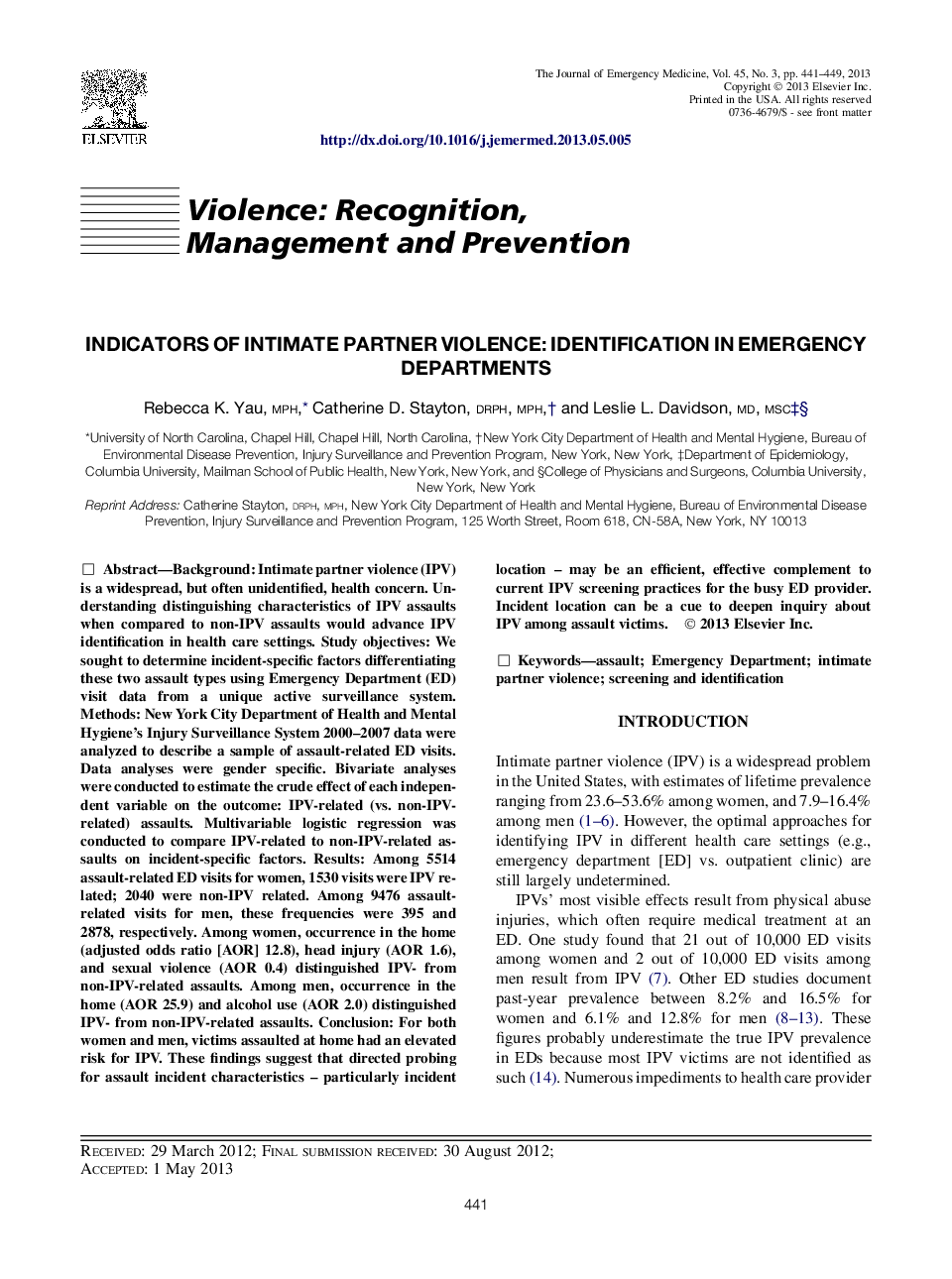| کد مقاله | کد نشریه | سال انتشار | مقاله انگلیسی | نسخه تمام متن |
|---|---|---|---|---|
| 6085521 | 1589145 | 2013 | 9 صفحه PDF | دانلود رایگان |
BackgroundIntimate partner violence (IPV) is a widespread, but often unidentified, health concern. Understanding distinguishing characteristics of IPV assaults when compared to non-IPV assaults would advance IPV identification in health care settings.Study objectivesWe sought to determine incident-specific factors differentiating these two assault types using Emergency Department (ED) visit data from a unique active surveillance system.MethodsNew York City Department of Health and Mental Hygiene's Injury Surveillance System 2000-2007 data were analyzed to describe a sample of assault-related ED visits. Data analyses were gender specific. Bivariate analyses were conducted to estimate the crude effect of each independent variable on the outcome: IPV-related (vs. non-IPV-related) assaults. Multivariable logistic regression was conducted to compare IPV-related to non-IPV-related assaults on incident-specific factors.ResultsAmong 5514 assault-related ED visits for women, 1530 visits were IPV related; 2040 were non-IPV related. Among 9476 assault-related visits for men, these frequencies were 395 and 2878, respectively. Among women, occurrence in the home (adjusted odds ratio [AOR] 12.8), head injury (AOR 1.6), and sexual violence (AOR 0.4) distinguished IPV- from non-IPV-related assaults. Among men, occurrence in the home (AOR 25.9) and alcohol use (AOR 2.0) distinguished IPV- from non-IPV-related assaults.ConclusionFor both women and men, victims assaulted at home had an elevated risk for IPV. These findings suggest that directed probing for assault incident characteristics - particularly incident location - may be an efficient, effective complement to current IPV screening practices for the busy ED provider. Incident location can be a cue to deepen inquiry about IPV among assault victims.
Journal: The Journal of Emergency Medicine - Volume 45, Issue 3, September 2013, Pages 441-449
